‘Innovating for China’. Are western brands lagging behind?
Over the past few decades, Chinese consumers’ perception of international brands and products was that they were ‘the best quality and most reliable’. But, with home-grown brands providing more choice and improved reliability, western brands are losing market share as it’s become harder to win trust and revenue, even for well-established brands like Siemens.
At the Consumer Electronics Show (CES) earlier this year and AWE in Shanghai, the home appliance giants Samsung, LG and Haier (Casarte) simultaneously launched new washing machines. Being a Chinese consumer myself, and having spoken to housewives in China in-depth about their attitudes and behaviours towards laundry—which are very different to western cultures—it was clear that these new products were designed specifically for the Chinese market.
Chinese attitudes and behaviours towards laundry
- Targeted wash. Due to poor air quality, to remove dirt from a shirt collar or cuff, Chinese consumers spend more time on pre-wash activities, such a hand-washing in the sink, because they’re concerned that the general washing program on washing machines may not be efficient enough to remove this type of stain.
- Separate wash. For hygiene reasons, they always prefer to wash outerwear and innerwear separately, especially when there is a baby at home. Chinese mums always hand wash their baby’s clothes.
- Efficient wash. The separate wash doubles the time Chinese consumers spend on laundry. A longer wash program is associated with consuming more water and energy, which does meet the need for an efficient wash cycle.
Washing machines aimed at the Chinese market
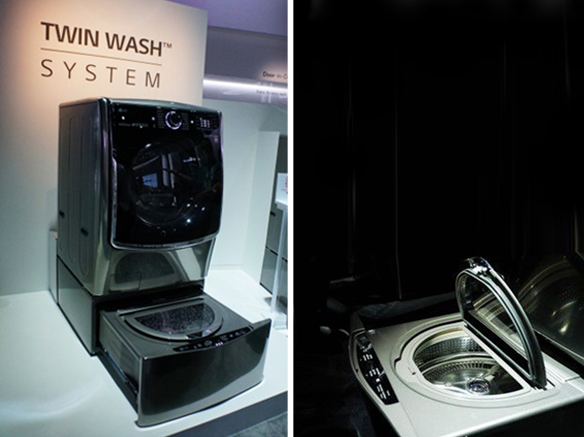
LG TWIN WASH
The TWIN combines a standard front-load space for a regular wash and a drawer-structure top-load small space for a specific wash like innerwear or baby clothes. The two cabinets work individually, which makes it possible to wash separately and simultaneously.
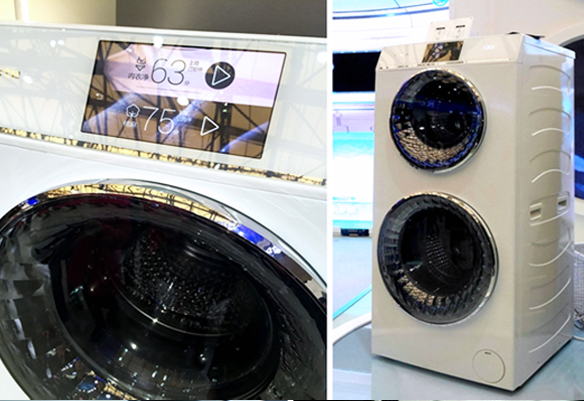
Casarte (premium brand of Haier) Twin Wash
The Casarte machine shares the same principle as the LG Twin Wash but Casarte has increased the height of the machine to 1280mm and has an enlarged second cabinet. Considering the limited space in the homes of most urban families in China (wash machines are usually set in the bathroom or balcony of city apartments), a taller machine does not sacrifice valuable space when compared to a wider machine.
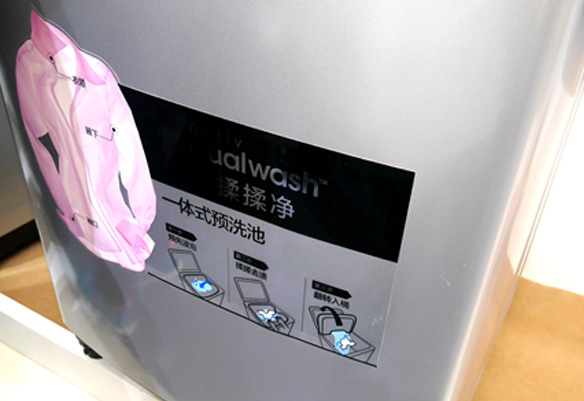
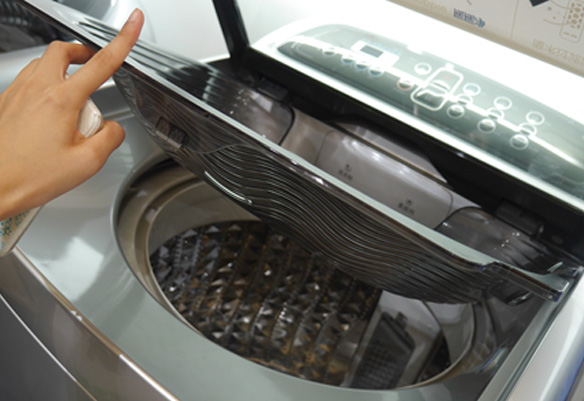
Samsung Dualwash
Different from LG and Casarte, the Samsung solution is based on a top-load platform and focuses on optimizing the laundry process. With a pre-wash sink integrated at the top of the cabinet, the new product reduces concern about stain removal by replacing traditional hand wash with an optimized and automated machine wash program.
What does Premium mean in Chinese culture?
Western brands are also looking to innovate in the premium market in China. With years of experience working with clients targeting the Chinese market, I like to define a Premium product as ‘Respecting local lifestyle and bringing in fresh experience’. The newly-launched washing machines introduced above are good examples of premium products.
Similar to laundry, cooking is another area where culture plays an extremely important role. Frequent stir-frying has meant the extractor hood has become the focus of the kitchen. Started in Ningbo, the manufacturing center for kitchen equipment, Fotile is now the leading Chinese brand in this sector and the only brand in the high-end market. ‘Understanding the consumer’s needs, the Chinese kitchen and presenting an international style’ is the design strategy of Fotile and this aligns well with its brand strategy.
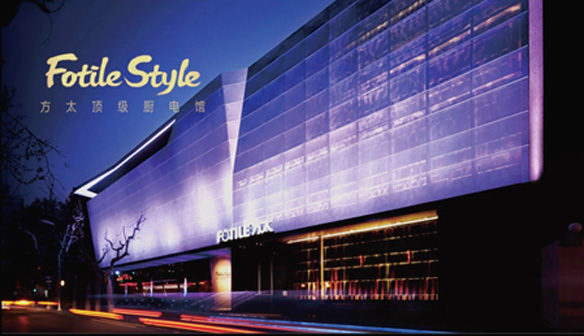
Top Kitchen Experience Hall. Image credit: Fotile
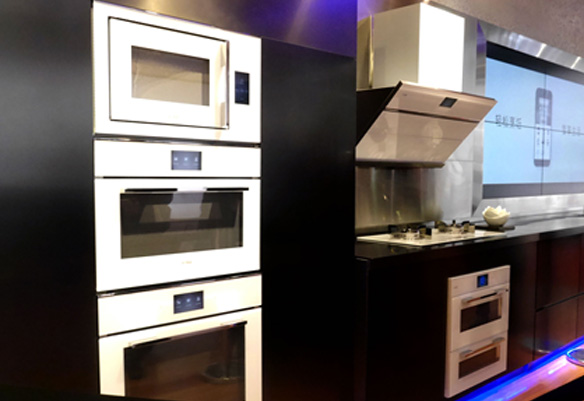
New kitchen set launched at AWE. Image credit: Fotile
Technology by itself cannot be called premium if the user interaction is not considered. The 7-inch touch screen of the new Casarte washing machine fully utilizes screen space by replacing misleading text with easy-to-understand icons. Colour has also been used to differentiate the operation of the two cabinets – with intuitive black and white backgrounds to attract the families that buy these premium products – usually either mature parents or Ayi (maids).
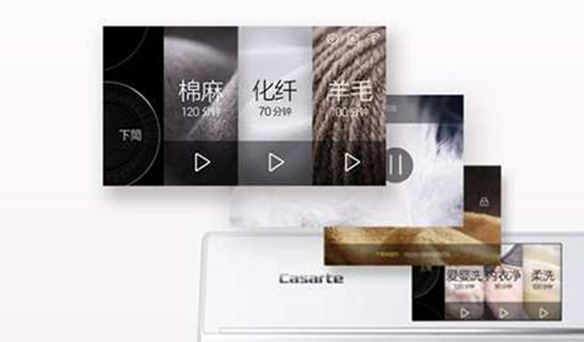
Casarte Twin Wash Interface
Haier – Leading Chinese Brand
Haier, without doubt, is the leading home appliance brand in China. The strategy for setting Casarte as its premium brand within Haier shows its success in challenging well-established international brands in the high-end market.
At AWE, Haier celebrated its transformation from a manufacturing giant to a consumer-driven brand and from a hardware producer to a service provider. Take Haier U+ Smart Home Ecosystem consisting of seven units: air, laundry, food, water, health, security and entertainment. It was first promoted last year and now we can see the development of even more tangible thoughts, concepts and products. Taking advantage of its brand influence in China, Haier has partnered with industry leaders like; Wanke – residential building developer, Intel – smart technology provider, P&G – FMCG, JD – distribution channel, COFCO – agricultural product provider etc. to fully understand and execute all stages of the design cycle.
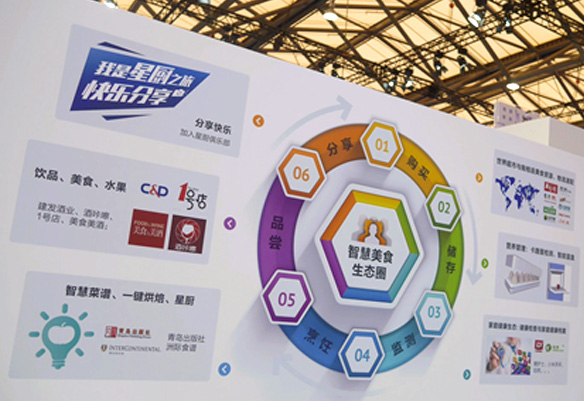
Haier U+ Smart Ecosystem (Food)
Home appliances like washing machines, refrigerators and kitchen equipment play an important role in people’s daily lives. Meanwhile, the usage of these products is strongly linked with regional culture and lifestyle. As consumers and designers, we are encouraged to see manufacturers starting to pay attention to and meeting the unique needs of local people. Compared with Asian brands, Western brands seem to be lagging behind in ‘innovating for China’.
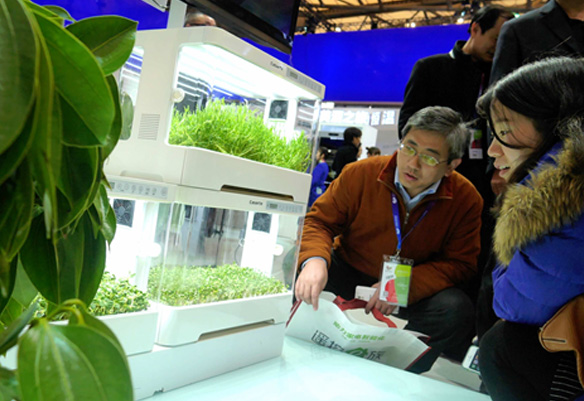
Haier Home Farm
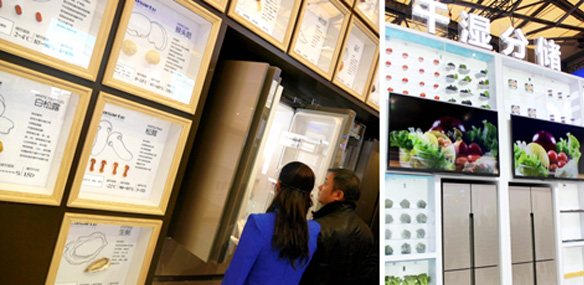
Haier refrigerator with separate storage spaces


